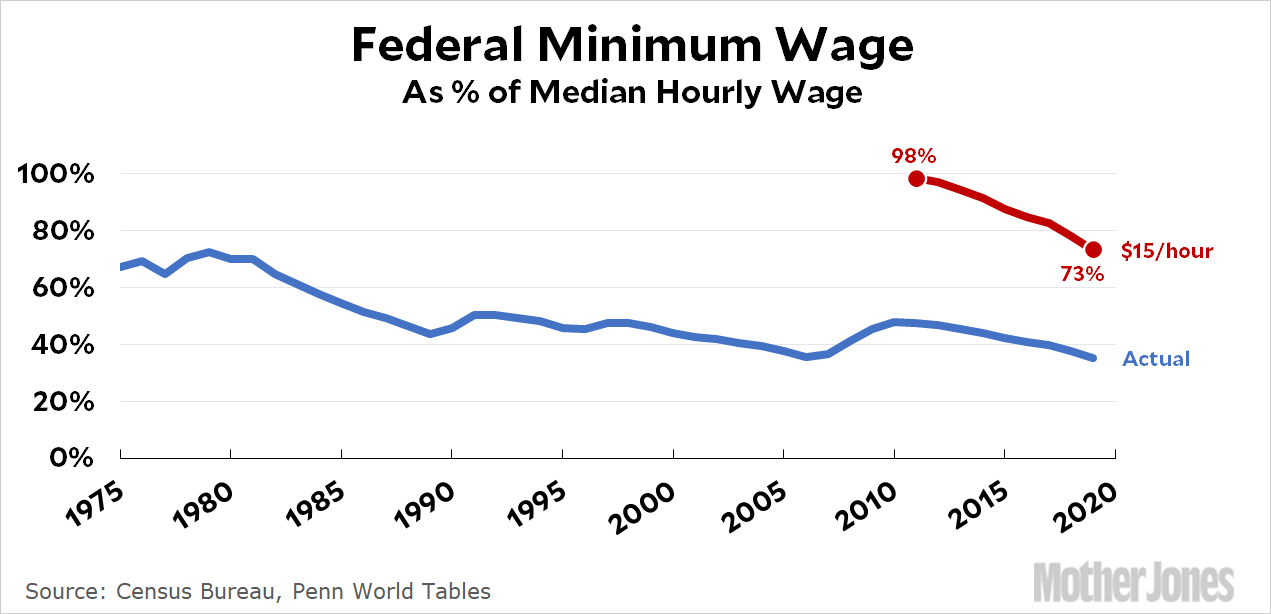The New York Times reports today that the $15 minimum wage, once a “fringe idea,” is now becoming mainstream. The article attributes this to pressure from labor activists, and that certainly has some truth to it. But I suspect that good ol’ inflation is the bigger culprit:

Back when the $15 minimum wage started to make waves, the median wage for all workers was about . . . $15. This means that a $15 minimum wage represented 98 percent of the median national hourly wage. At no point in history has the minimum wage been anywhere near that high.
Today, however, $15 per hour represents about 73 percent of the median national wage. That’s still high by historical standards, but not unheard of. And if you phase it in, as most plans do, it will represent something like 60-70 percent of the median national wage by the time it comes into full effect.
These numbers vary depending on location (wages are higher in cities than in rural areas) and by how you calculate median hourly wages. But the basic story remains the same: over the past decade $15 per hour has been devalued to a number that’s much more acceptable to employers. That’s the underlying tailwind that’s helped labor activists along.


















